 Larus cachinnans
Larus cachinnans
(last update:
Greg Neubauer
Marcin Przymencki
Albert de Jong
Mars Muusse
cachinnans plumages
Larus cachinnans hybrid 19CY P432 January - February 2010, Deponie Pohlsche Heide - Minden, Germany (52°23'05N, 08°46'45E). Picture: Armin Deutsch.
Red ring from Poland. Ringed as pullus red P432 & metal PLG DN-00005 on May 25 1992 in Wisla reservoir - Wloclawek, Poland (52°39'N, 19°08'E). Colony known for its mixed breeding population. True parentage of red P432 not known, ringed as Larus argentatus sesu lato. Total trait score is 12, which is just within the limits for pure Caspian Gull, but also well within the hybrid zone of the spectrum, and still possible for argentatus. To discuss such birds, its good to first classify it on the 'hybrid scale' according Gibbins et al, see table below pictures.
Wingtip pattern is wrong for michahellis, but fact many other traits seem to fit that taxon quite well, accentuated by vivid bare part colour of bill, iris and especially legs. Also, this bird was heard calling, and the long call was a deep and slow call as in michahellis, completely diffeernt from the fast laughing call of cachinnans. So, some options are open: is there michahellis blood in this bird (michahellis x argentatus)? Could it be yellow-legged Herring Gull ("omissus") x cachinnans?
below: cachinnans hybrid 19CY P432 January 26 2010, Deponie Pohlsche Heide - Minden, Germany (52°23'05N, 08°46'45E). Picture: Armin Deutsch.
First image shows the bird with closed wing. Easily mistaken for "pure michahellis", with strong bill, extensive head streaking by mid-winter, fierce facial expression and bright yellow legs. However, obvious iris pigmentation and long tongue on P10 when wings are raised, larege mirror on P9, & deep grey tongue on upperside of P9 completely wrong for michahellis.
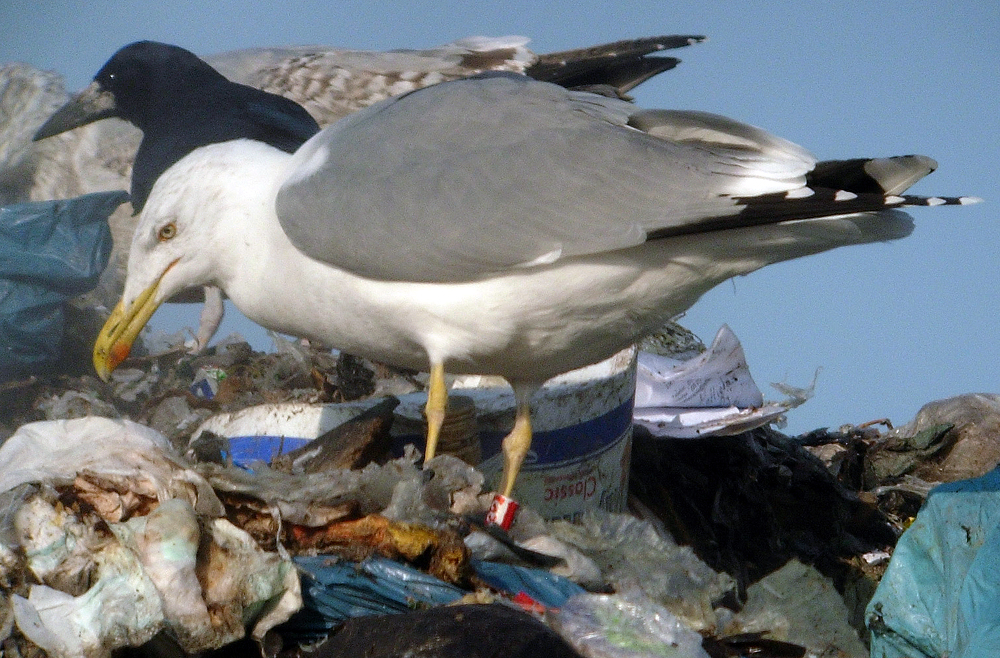
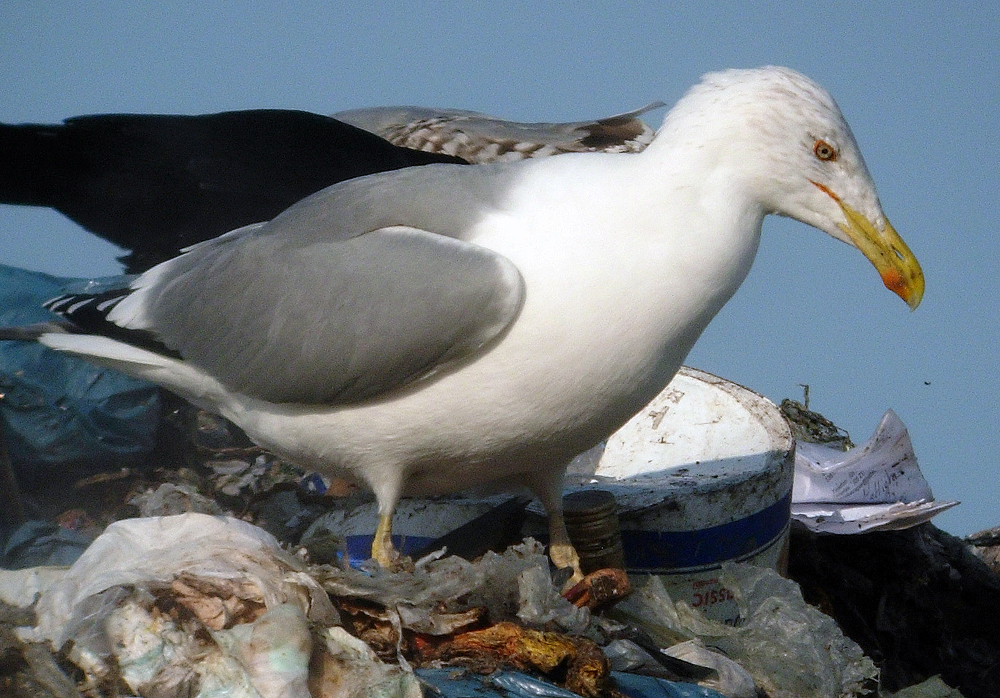
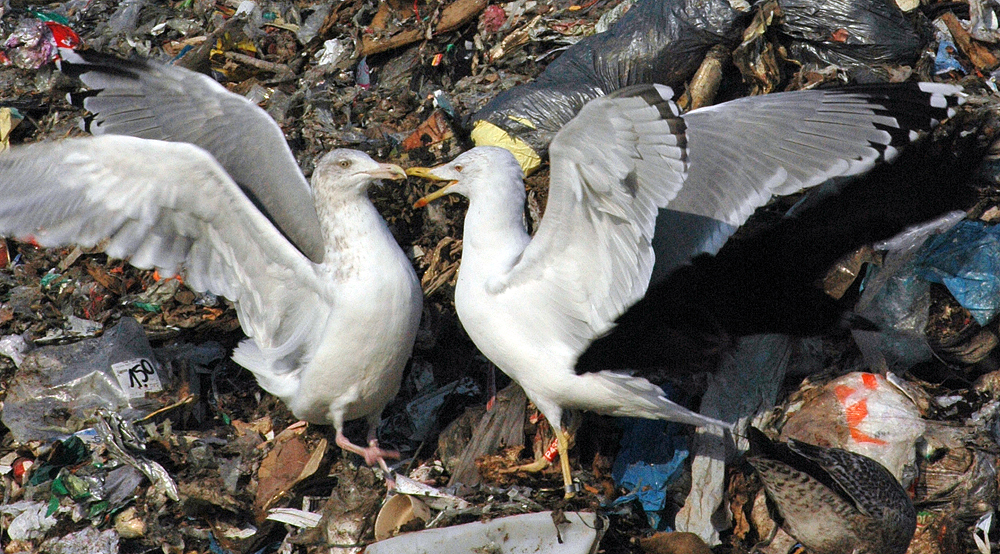

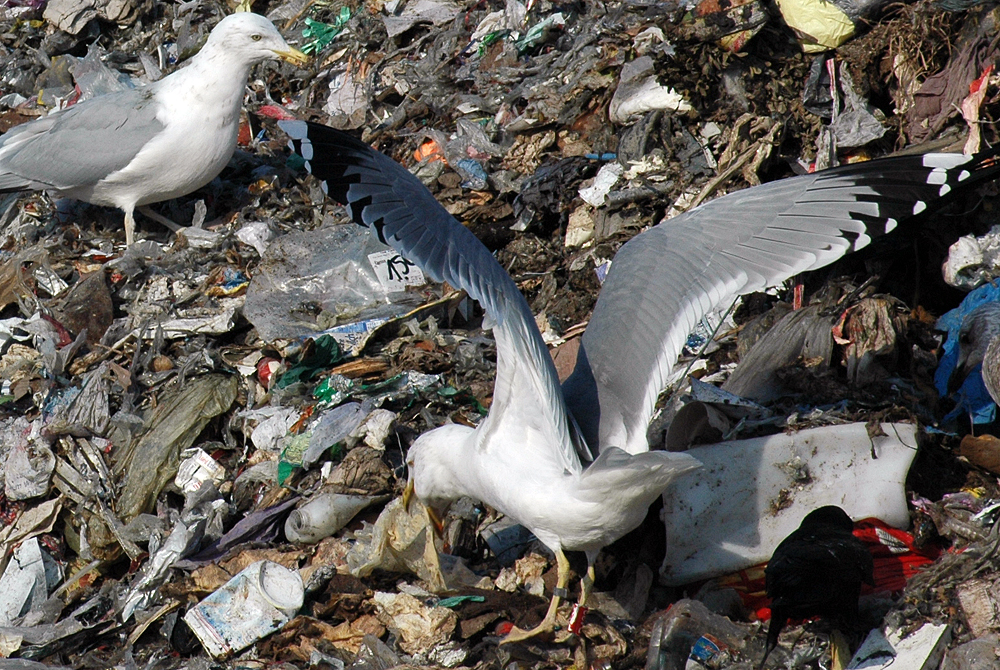
below: cachinnans hybrid 19CY P432 February 16 2010, Deponie Pohlsche Heide - Minden, Germany (52°23'05N, 08°46'45E). Picture: Armin Deutsch.
White-headed by February.

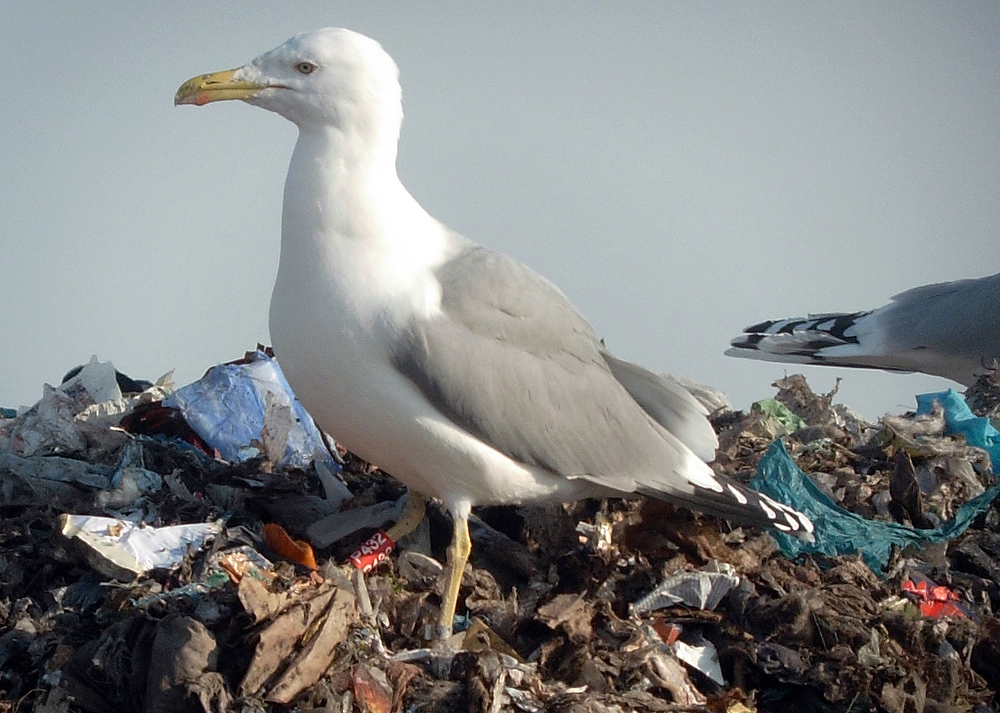
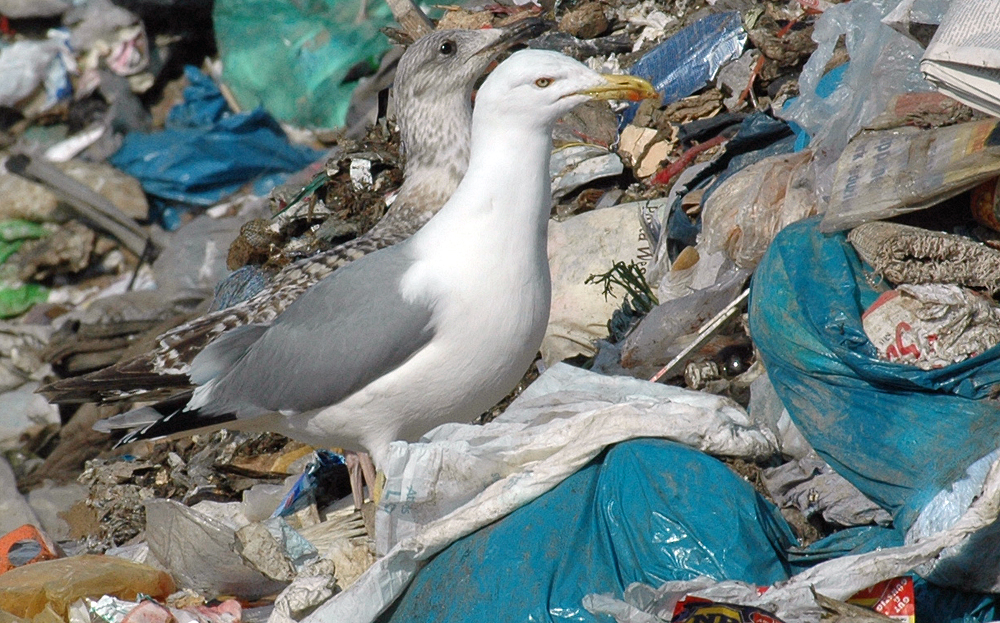

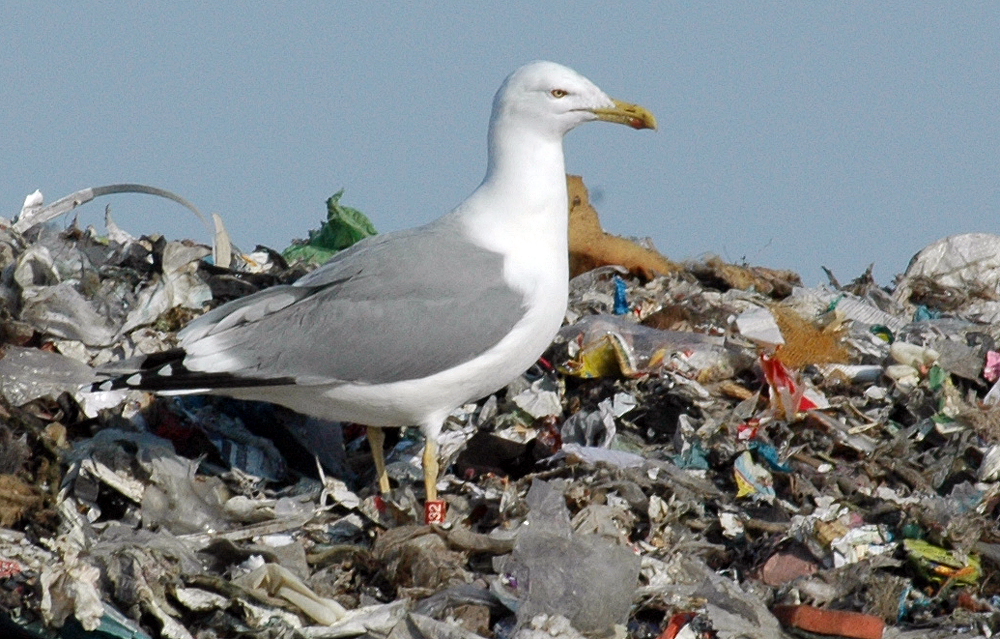
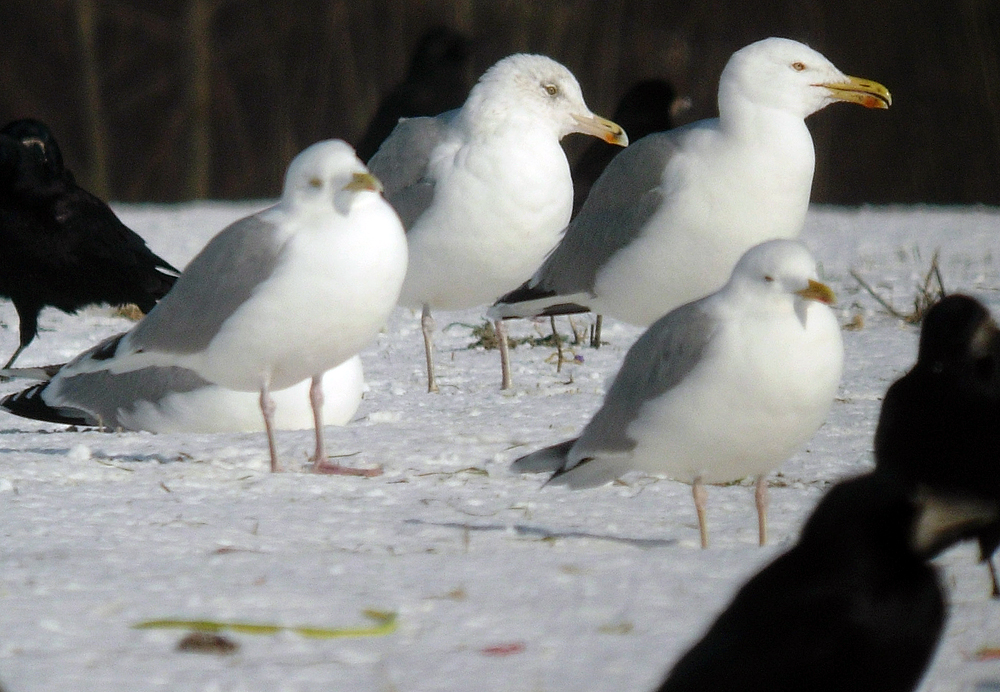

Below, table 1 is repeated to score this bird in adult plumage. Partial scores are in italic + bold.
Total trait score is 12 (by Mars Muusse), but open for discussion.
| Trait | Score | Description |
| P10 overall pattern: white to black ratio | 0 | less black than white |
| 1 | approximately equal black and white | |
| 2 | more black than white | |
| P10: white tip | 0 | clear white, no signs of black |
| 1 | small dark spots on one or both webs | |
| 2 | incomplete subterminal bar (two large black spots, one on each web or an unconnected bar, broken in the middle) | |
| 3 | complete subterminal bar | |
| P10: tongue | 0 | white or whitish |
| 1 | paler than mantle | |
| 2 | same shade as mantle | |
| P5: extent of black | 0 | black on both webs connected, forming band, black of equal depth on each web |
| 1 | black on both webs connected, forming band, black on outer web deeper than inner | |
| 2 | black on both webs, but isolated spots (= incomplete bar) | |
| 3 | black on outer web only | |
| 4 | no black | |
| P4: extent of black | 0 | black on both webs |
| 1 | black on one web only | |
| 2 | no black | |
| Iris peppering | 0 | dark-looking, >50% covered by dark spotting/peppering |
| 1 | moderately dark, with 10-50% of the area spotted | |
| 2 | single or very few dark spots (area < 10%) | |
| 3 | no dark spotting on iris | |
| Eye-ring colour | 0 | dark/deep orange to red |
| 1 | pale to moderately orange | |
| 2 | yellow | |
| Bill shape | 0 | very long and slim, with little/no visible gonydeal angle (L:D ratio >2.8) |
| 1 | slim, slight gonydeal angle (ratio 2.4-2.79) | |
| 2 | intermediate (ratio 2.0-2.39) ratio measured 2,33 Mars Muusse from second picture | |
| 3 | short and deep, well-marked gonydeal angle (ratio <2.0) | |
| Leg length | 0 | long |
| 1 | moderately long | |
| 2 | short |
Fig. 6. Sum trait scores for adult Caspian Larus cachinnans and Herring Gulls L argentatus, and hybrids. Scores are calculated by summing individual trait score values. The figure shows the percentage of individuals in the sample with a given sum value. Numbers in parentheses are the minimum and maximum values recorded.
From the Rarities Committee's files - Identification of
Caspian Gull.
Part 2: phenotypic variability and the field characteristics of hybrids, by Chris Gibbins, Grzegorz Neubauer and Brian Small, IN: BB 104/2011.
